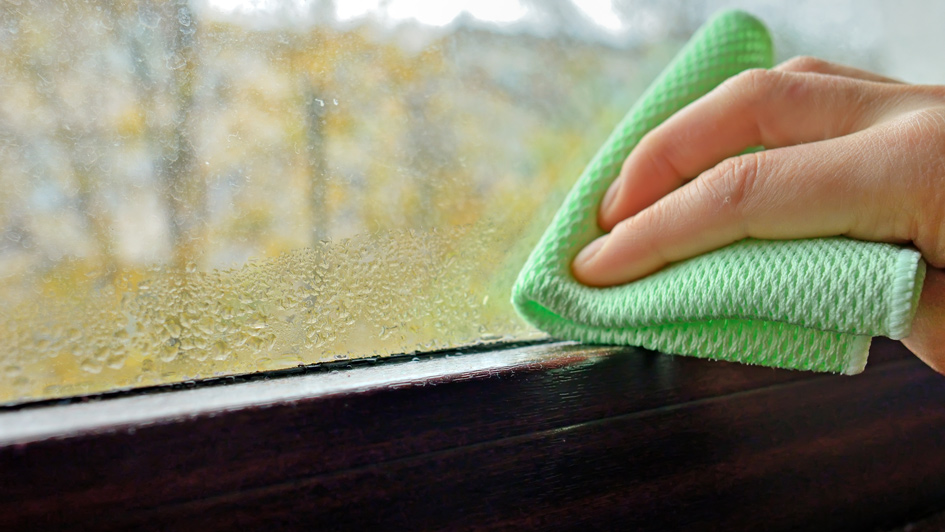
The windows of your home are a gateway to the outdoors, a way to allow light in when you appreciate the view of your garden, yard or scenery. The last thing you need to see is a sweaty window covered in a coating of condensation.
Not only are windows covered in condensation unappealing, they also can be a sign of a more substantial air-quality deficit in your home. Thankfully, there’s multiple things you can try to correct the problem.
What Causes Sweating on Windows
Condensation on the inside of windows is formed by the humid warm air inside your home reaching the cold surface of the windows. It’s notably prevalent in the winter when it’s much chillier outside than it is inside your home.
Inside Moisture vs. In Between Panes
When discussing condensation, it’s necessary to recognize the contrast between moisture on the inside of your windows in comparison to moisture in between the windowpanes. One is an indoor air quality issue and the other is a window issue.
- Moisture on the inside of a window is created from the warm damp air inside your home forming along the glass.
- The moisture you notice between windowpanes is caused when the window seal fails and moisture gets in between the two panes of glass, in which case the window needs to be repaired or replaced.
- Condensation in the windows isn’t a window problem and can instead be fixed by changing the humidity across your home. Many things generate humidity throughout a home, like showers, cooking, bathing or even breathing.
Why Indoor Sweating on Windows Can Be Trouble
Although you might think condensation in your windows is a cosmetic concern, it can be indicating your home has excess humidity. If that’s the case, water may also be collecting on window frames, cold walls or other surfaces. Even a slim film of water can cause wood surfaces to mildew or rot over time, increasing the growth of mildew or mold.
How to Lower Humidity in Your Home
Fortunately there are several options for removing moisture from the air inside your home.
If you have a humidifier operating in your home – whether it be a small unit or a whole-house humidifier – lower it further so the humidity inside your home comes down.
If you don’t have a humidifier running and your home’s humidity level is higher than you prefer, look into getting a dehumidifier. While humidifiers introduces moisture into your home so the air doesn’t get too dry, a dehumidifier pulls excess moisture out of the air.
Smaller, portable dehumidifiers can absorb the water from one room. However, those units require emptying out water trays and usually service a somewhat limited area. A whole-house dehumidifier will eliminate moisture across your entire home.
Whole-house dehumidifier systems are controlled by a humidistat, which allows you to establish a humidity level just like you would pick a temperature on your thermostat. The unit will run automatically when the humidity level surpasses the set level. These systems collaborate with your home’s HVAC system, so you will want to contact qualified professionals for whole-house dehumidifier installation Wilmington.
Alternative Ways to Lower Condensation on Windows
- Exhaust fans. Installing exhaust fans near humidity hotspots including the bathroom, laundry room or above the kitchen range can help by pulling the warm, moist air from these spaces out of your home before it can increase the humidity level across your home.
- Ceiling fans. Turning on ceiling fans can also keep air flowing throughout the home so humid air doesn’t get caught up in one spot.
- Open window treatments. Throwing open the blinds or drapes can reduce condensation by preventing the humid air from being stuck against the windowpane.
By lowering humidity in your home and moving air throughout your home, you can enjoy clear, moisture-free windows even in the middle of the winter.
